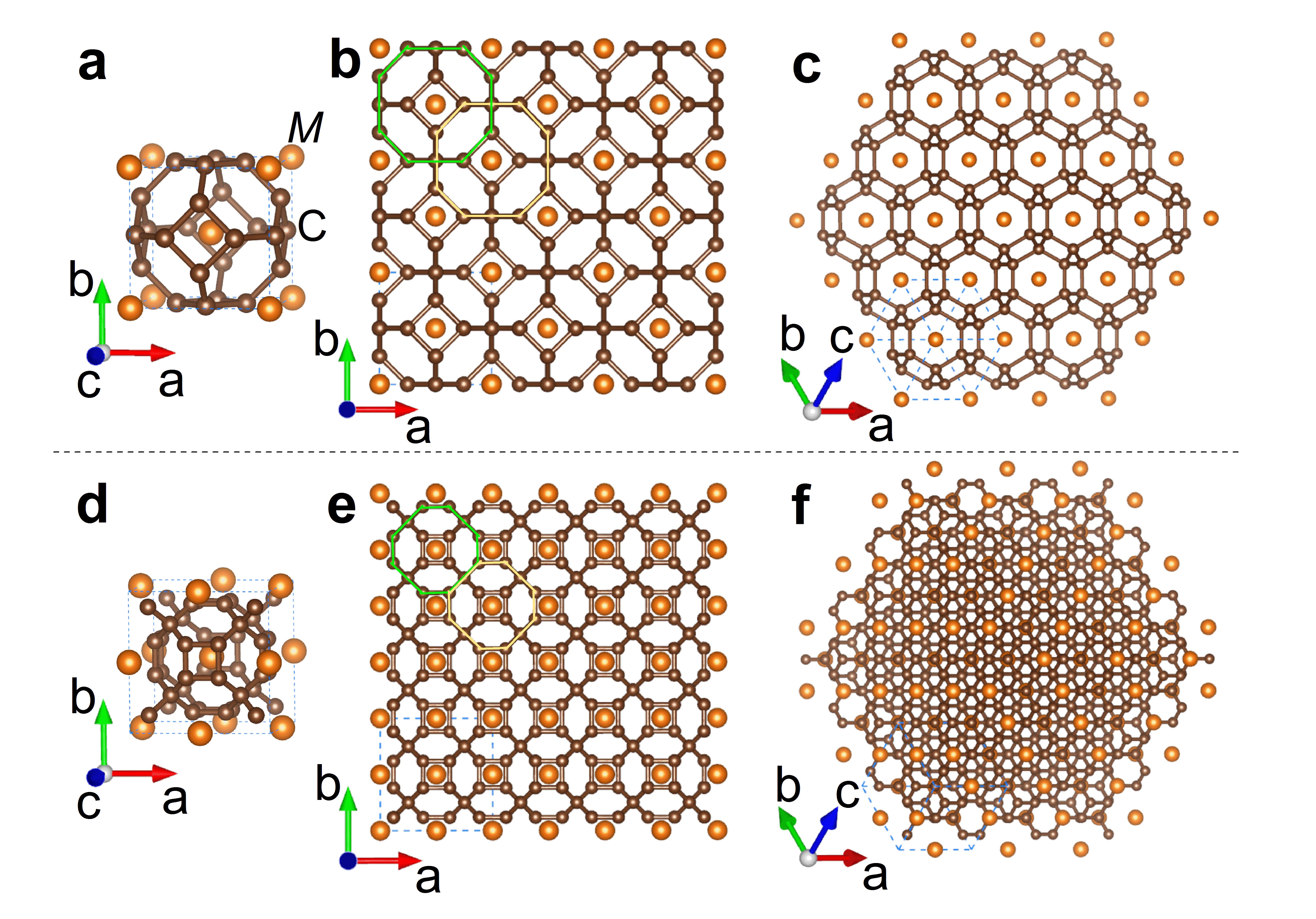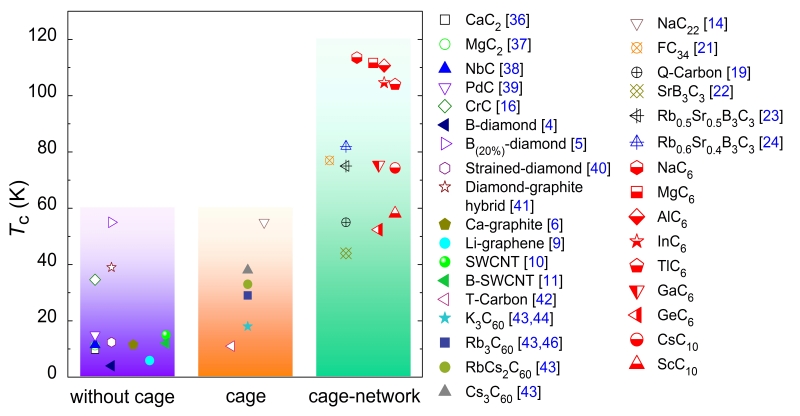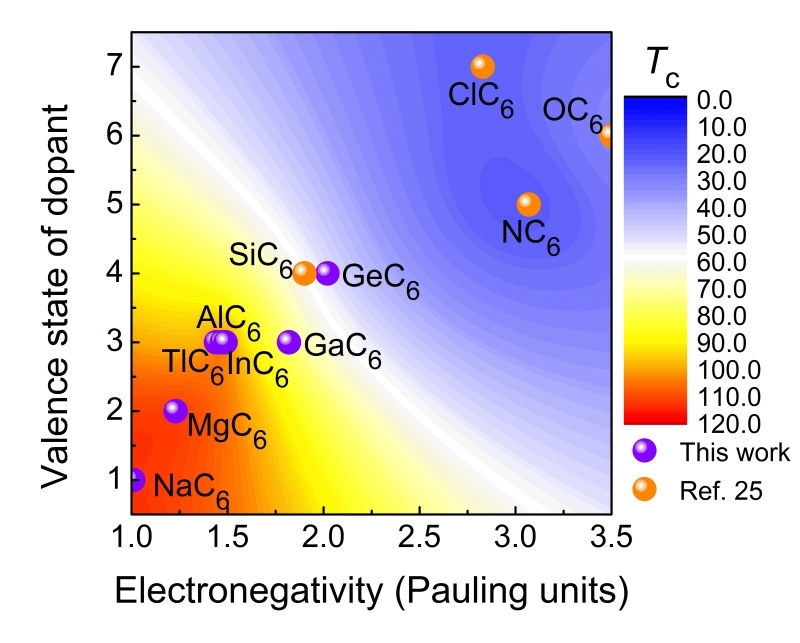Advancing High-Temperature Superconductivity in Carbon Materials
Date:24-10-2023 | 【Print】 【close】
Researchers, led by Prof. ZHONG Guohua from the Shenzhen Institute of Advanced Technology (SIAT) at the Chinese Academy of Sciences (CAS) have made a significant prediction regarding superconductivity above 100 K within carbon-cage networks. By utilizing first-principles calculations, they crafted carbides with the structural characteristics of carbon-cage networks. This approach led to achieving robust electron-phonon coupling and surpassing the superconducting transition temperatures of conventional carbides like diamond, graphene, carbon nanotubes, and fullerene.
The study was published in Advanced Science on October 10.
Recently, there has been a surge of interest in superconductivity within lightweight elemental compounds, particularly in the context of ambient-pressure high-temperature superconductivity. Carbon materials, as representative lightweight elemental compounds, are deemed the cornerstone of future materials, showcasing unique performance advantages across various fields. Although superconductivity has been detected in certain carbon-based materials, including diamond, graphene, carbon nanotubes, and fullerene, their superconducting transition temperatures (Tc) remain below the critical point of 77 K, the boiling point of liquid nitrogen.
To explore the development of carbon material superconductors with elevated Tc, researchers devised two novel carbon structures featuring cage-like networks. They meticulously investigated their superconductivity by introducing metal dopants. These cage units, C24 and C32 are interconnected through shared surfaces to create crystal structures.
High-throughput calculations have anticipated that these cage-like network structures can exhibit high-temperature superconductivity under ambient pressure when doped with metals. Notably, C24-cage-network crystals doped with Na, Mg, Al, In, and Tl metals demonstrate high-temperature superconductivity surpassing 100 K. This not only outperforms the Tc of common carbon materials such as diamond, graphene, carbon nanotubes, and fullerene but also greatly exceeds the boiling point of liquid nitrogen.
Researchers also unveiled that the coupling of cage structures plays a pivotal role, resulting in stronger electron-phonon interactions compared to other carbon materials and leading to higher Tc. Simultaneously, they found that the superconductivity of carbides with cage networks is heavily dependent on the electronegativity and doping concentration of the introduced metals. Weaker electronegativity and higher doping concentration tend to yield higher Tc values.
Prof. ZHONG stated, "Our current findings provide a promising pathway for the development of high-Tc superconductors. We anticipate that this work will inspire further experimental and theoretical investigations into high-temperature superconductors based on carbides."

Fig. 1 (a) - (c) corresponds to a network like structure formed by the coupling of C24 cage units and C24 cages, viewed from different directions. (d) - (f) corresponds to a network like structure formed by the coupling of C32 cage units and C32 cages, viewed from different directions. (Image by SIAT)

Fig. 2 Comparison of Tc values of carbon-based materials at ambient pressure. Our results are marked with the red half full symbols. (Image by SIAT)

Fig. 3 Phase diagram of Tc and dopants. The dependence of Tc on the electronegativity and valence states of dopant for C24-cage-network superconductor at ambient pressure. (Image by SIAT)
Media Contact:
ZHANG Xiaomin
Email:xm.zhang@siat.ac.cn